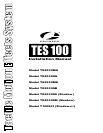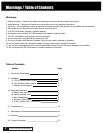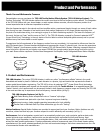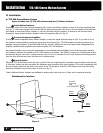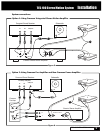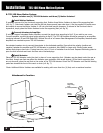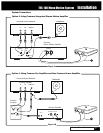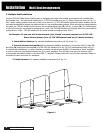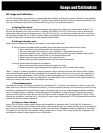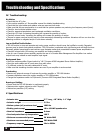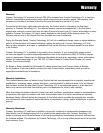
TES-100 INSTALLATION MANUAL
Usage and Calibration
III. Usage and Calibration
The TES-100 Actuators are powered by a separate dedicated amplifier and therefore must be calibrated to best integrate
with the audible sound system (loudspeakers). Crowson’s recommended calibration levels are meant as a guideline, from
which each customer may choose to customize according to his or her personal preference.
A. Setting Filter Level:
A Low-Pass-Filter (LPF) is employed to remove unwanted high frequency content from Crowson Motion Systems. The
level can be adjusted from a very low 20Hz to a relatively high 600Hz. If the LPF is set too low, you may experience a
gap between what you feel and what you hear. If the LPF is set too high, you will begin to hear sound from your chair.
We recommend setting the LPF at 300Hz to begin. Reduce the setting if you feel unwanted high-frequency content and
increase the setting if you believe that you are missing wanted content.
B. Setting Intensity Level:
Set the motion intensity level relative to the master or main audio system level.
If using a Crowson Integrated Motion Amplifier, follow these steps to achieve optimal motion levels:
1. Play a movie scene that includes ample low-frequency content.
2. Turn the master audio volume level up to your maximum, comfortable listening level.
3. Set Motion Amplifier to min.; slowly increase the volume until the red peak indicators begin to flash.
4. Reduce the master audio volume level to your favorite listening level.
5. Replay the movie scene while sitting in your new active seat.
6. Gently reduce the Motion Amplifier volume until the motion feels natural*.
If using a Crowson Bass Management Pre-Amplifier:
1. Play a movie scene that includes ample low frequency content.
2. Gently increase the Bass Management Pre-Amplifier gain until the motion feels natural*.
*Note 1: Though it is certainly possible to achieve impressive motion intensity levels from the Crowson Motion System,
recommended intensity levels will blend seamlessly with the audible sound. Just as you do not want your subwoofer to
overpower your other loudspeakers, motion intensity should not overpower the rest of your home theater experience.
Improper volume calibration, as with any independently controlled output, will not achieve the most realistic experience
and on the contrary, may detract from the immersion you desire.
C. Bass Management:
Low-frequency content is not always isolated to the subwoofer/LFE (.1) channel. Low-frequency content can (and often
does) exist in any channel of a multi-channel recording. In order to capture a majority of low-frequency content from any
soundtrack, regardless of the sound format, Crowson recommends the use of our bass management system, available
with our Integration Motion Amplifiers or Bass Management Pre-Amplifiers. Crowson’s three (3) channel input system
receives sound content from both left and right front main channels as well as from the subwoofer/LFE channel. These
channels are summed to a discrete Left (L) and Right (R) stereo output. Utilizing two (2) TES-100 Actuators thus delivers
a stereo low-frequency motion experience.
D. Stereo vs. Mono Motion:
Using a TES-100 Stereo Motion System affords you the capability to experience Left (L) and Right (R) directional, or
“steered” low-frequency motion. Stereo tactile motion is best sensed through your hands and lower arms when resting on
the armrests of a single-seat chair. Whenever possible your front main loudspeakers should be operating in “full-range”.
This means the A/V receiver’s front speaker setting should be set to “Large”. When using a Mono (M) configuration, all
low-frequency content is added together for a uniform effect.
9



